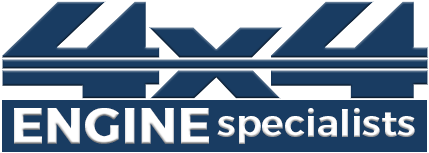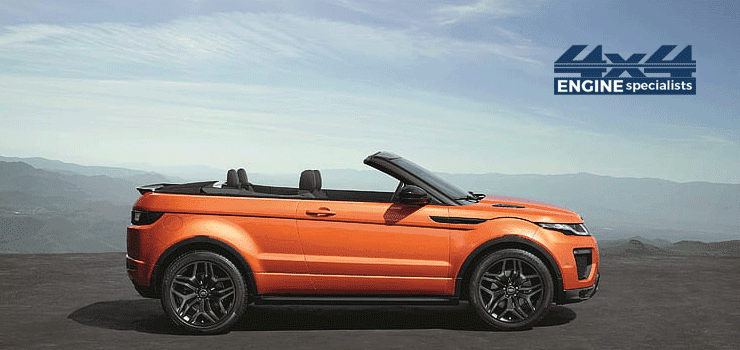The Range Rover 2.0 engine has become a hallmark of modern automotive engineering, balancing performance with environmental responsibility. Over the years, this engine has evolved significantly, reflecting advancements in technology, engineering, and design. The development of the Range Rover 2.0 engine is not just a story of innovation but also of adapting to changing market demands and regulatory pressures. We will explore the historical developments of the Range Rover 2.0 engine, focusing on its journey from inception to the latest advancements.
The Inception of the Range Rover 2.0 Engine
The Range Rover 2.0 engine was introduced as part of Land Rover’s commitment to creating more efficient and eco-friendly vehicles. The initial development of the 2.0-liter engine began in response to the growing demand for smaller, more efficient engines that could deliver the performance expected of a Range Rover. The 2.0 engine was first introduced in the Range Rover Evoque and later became a standard offering across the Range Rover lineup.
This engine was designed to meet stringent emissions standards while providing the power and torque that Range Rover customers had come to expect. The early versions of the 2.0 engine featured turbocharging technology, which allowed for a smaller engine displacement without sacrificing performance. This move was part of a broader trend in the automotive industry toward downsizing engines to improve fuel efficiency and reduce carbon emissions.
Evolution of Turbocharging Technology
Turbocharging has played a pivotal role in the development of the Range Rover 2.0 engine. Early iterations of the engine utilized single-turbo setups, which provided a significant boost in power and efficiency compared to naturally aspirated engines of similar size. However, as technology advanced, Land Rover engineers began experimenting with twin-scroll turbochargers, which offered even greater performance benefits.
The adoption of twin-scroll turbocharging marked a significant milestone in the engine’s development. This technology improved throttle response, reduced turbo lag, and provided a more linear power delivery, making the Range Rover 2.0 engine more responsive and enjoyable to drive. As a result, the engine could deliver high levels of power and torque while maintaining excellent fuel economy, making it an ideal choice for luxury SUVs like the Range Rover.
Introduction of Hybrid Technology
In recent years, the Range Rover 2.0 engine has seen further evolution with the introduction of hybrid technology. The move towards electrification was driven by the need to reduce emissions and comply with increasingly stringent environmental regulations. The integration of electric motors with the 2.0 engine resulted in the creation of plug-in hybrid variants, offering a combination of electric and gasoline power for enhanced efficiency.
The hybridization of the 2.0 engine allowed Land Rover to maintain the engine’s performance characteristics while significantly reducing its environmental impact. The electric motor provided additional power during acceleration and enabled short-distance driving on electric power alone. This development was a significant step forward in the Range Rover’s journey toward sustainability, aligning with global trends in automotive engineering.
Advancements in Engine Materials and Design
The evolution of the Range Rover 2.0 engine has also been marked by significant advancements in materials and design. Early versions of the engine were constructed using traditional materials like cast iron and aluminum. However, as the demands for performance and efficiency grew, engineers began exploring new materials and design techniques to enhance the engine’s capabilities.
The use of lightweight materials such as high-strength aluminum and advanced composites has become more prevalent in the construction of the 2.0 engine. These materials not only reduce the engine’s overall weight but also improve its durability and thermal efficiency. Additionally, advancements in computer-aided design (CAD) and simulation technologies have allowed engineers to optimize the engine’s design for better performance, efficiency, and reliability.
The Role of Engine Replacement in the Range Rover 2.0 Evolution
As the RangeRover 2.0 engine has evolved, so too has the need for Engine Replacement services. Over time, even the most advanced engines can experience wear and tear, leading to a decline in performance and efficiency. Engine Replacement has become a crucial aspect of maintaining the Range Rover’s legendary performance, especially for older models that may have accumulated significant mileage.
Engine Replacement services provide Range Rover owners with the opportunity to restore their vehicles to peak performance by installing a new or reconditioned 2.0 engine. This process involves removing the old engine and replacing it with a factory-spec unit, ensuring that the vehicle performs as it did when it was new. This service is particularly important for those who want to extend the life of their Range Rover without compromising on performance.
The Importance of Reconditioned Engines
Reconditioned Engines have become an increasingly popular option for Range Rover owners looking to maintain their vehicles without the high cost of a brand-new engine. A Reconditioned Engine is one that has been completely disassembled, cleaned, inspected, and rebuilt using new or reconditioned parts. This process restores the engine to its original specifications, ensuring it performs as intended.
For the RangeRover 2.0 engine, reconditioning offers a cost-effective alternative to Engine Replacement. Reconditioned Engines are thoroughly tested to ensure they meet or exceed factory standards, providing a reliable and efficient solution for extending the life of a Range Rover. Additionally, reconditioning helps reduce waste by reusing engine components, aligning with the growing emphasis on sustainability in the automotive industry.
Supply and Fit Services for the Range Rover 2.0 Engine
Supply and fit services have become an integral part of the Range Rover ownership experience, particularly for those looking to replace or upgrade their 2.0 engine. These services involve not only providing the engine itself but also the professional installation required to ensure it performs optimally. Supply and fit services are typically offered by specialized automotive shops that have the expertise and equipment needed to handle complex engine installations.
For RangeRover 2.0 engine owners, Supply and fit services offer a convenient and efficient way to maintain their vehicles. Whether it’s a brand-new engine or a Reconditioned Engine, professional installation is crucial to ensure that the engine operates smoothly and reliably. These services also often include a warranty, providing peace of mind for the vehicle owner.
The Future of the Range Rover 2.0 Engine
The future of the RangeRover 2.0 engine is likely to be shaped by continued advancements in technology and a growing focus on sustainability. As the automotive industry moves toward greater electrification, we can expect to see further integration of hybrid and electric technologies in the 2.0 engine. Additionally, ongoing research into alternative fuels and emissions reduction technologies may lead to new developments in engine design and performance.
The RangeRover 2.0 engine has already undergone significant evolution, but its journey is far from over. As Land Rover continues to innovate, the 2.0 engine will likely remain a key part of the Range Rover lineup, offering a blend of performance, efficiency, and environmental responsibility. For owners, staying informed about these developments and considering options like Engine Replacement, Reconditioned Engines, and Supply and fit services will be essential to keeping their vehicles in top condition.
Conclusion
The historical development of the RangeRover 2.0 engine is a testament to the power of innovation and adaptation in the automotive industry. From its inception as a downsized, turbocharged engine to its current iterations incorporating hybrid technology and advanced materials, the 2.0 engine has consistently evolved to meet the demands of modern driving. Services such as Engine Replacement, Reconditioned Engines, and Supply and fit have played a vital role in maintaining the performance and longevity of these engines, ensuring that they continue to deliver the power and reliability that Range Rover is known for. As the industry moves forward, the Range Rover 2.0 engine will undoubtedly continue to adapt, setting new standards for performance and sustainability.


